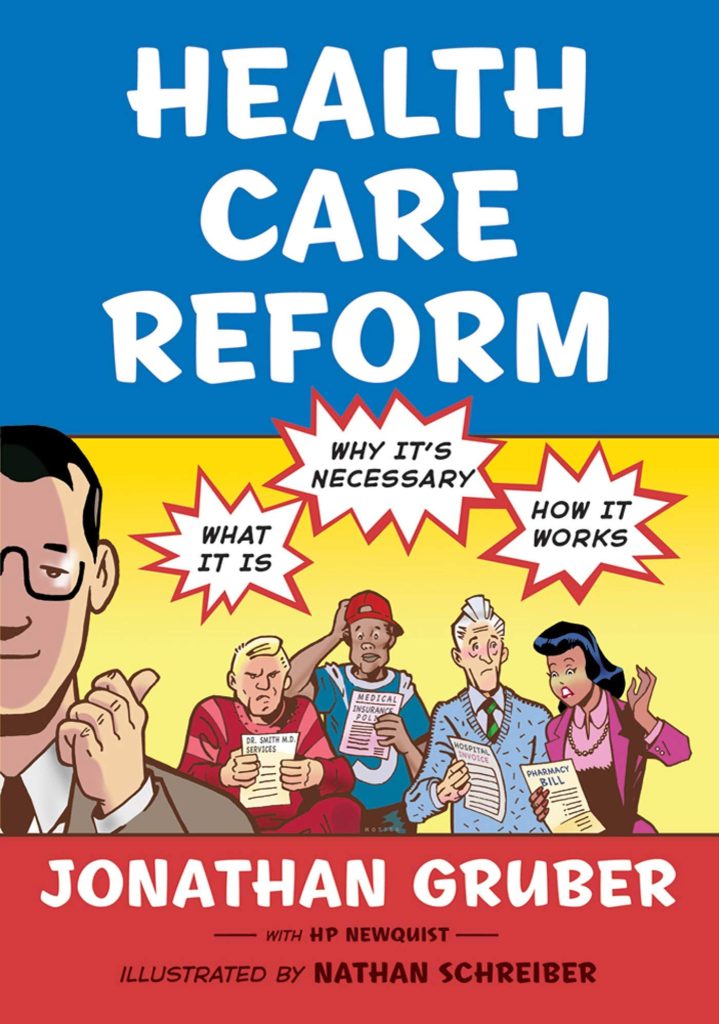
I have worked on, edited, and produced hundreds of books over the course of my career as an editor and packager. Occasionally, one will spike on Amazon.com, or even be mentioned in The New York Times’ Book Review section.
But I don’t think I’ve ever had a tiger by the tail as I now have with Jonathan Gruber, HP Newquist, and Nathan Schreiber’s HEALTH CARE REFORM: WHAT IT IS, WHY IT’S NECESSARY, AND HOW IT WORKS.
The book has been on The New York TimesGraphic Novel Bestsellers List for six weeks now. Why? Because it’s a good, clear narrative that’s simple to follow . . . and most folks still do not have a real clue as to what the new health care law (the Affordable Care Act, or ACA) is all about. And health care is a subject that affects all of us.
This book was a challenge to create. It was commissioned by the former publisher of Hill & Wang, Thomas LeBien, who has since moved on to Simon & Schuster. Thomas told me he had gotten M.I.T. economist Jonathan Gruber to agree—at least conditionally—to doing a book on the new health-care reform legislation that he had helped put together for the Obama administration. But I had to “audition for the part.” That meant I needed to put together a talent team and pitch our view of how we would envision doing the book. And the pitch was on a telephone conference call.
Jonathan Gruber, one of the brightest, nicest people I’ve ever had the good fortune to work with, agreed to have Z File produce the book. HP Newquist, a whiz at explaining how things work in various arenas for a wide variety of readers, was the first person I contacted. Harvey had done a book with Lou Dobbs for me on the commercialization of space, and thereafter had done a series of projects with Lou. I knew that he did not always see eye-to-eye with Mr. Dobbs, but Lou loved working with him. And I needed someone who would not bring either his ego or his own political agenda to the project. HP was the guy I wanted.
Ultimately, the ridiculously talented Nathan Schreiber became the visual translator of HP’s script. A script, by the way, that underwent 14 drafts before we finally had solved the equation, cracked to code, and put together the most potent visual account of health care in the history of publishing.